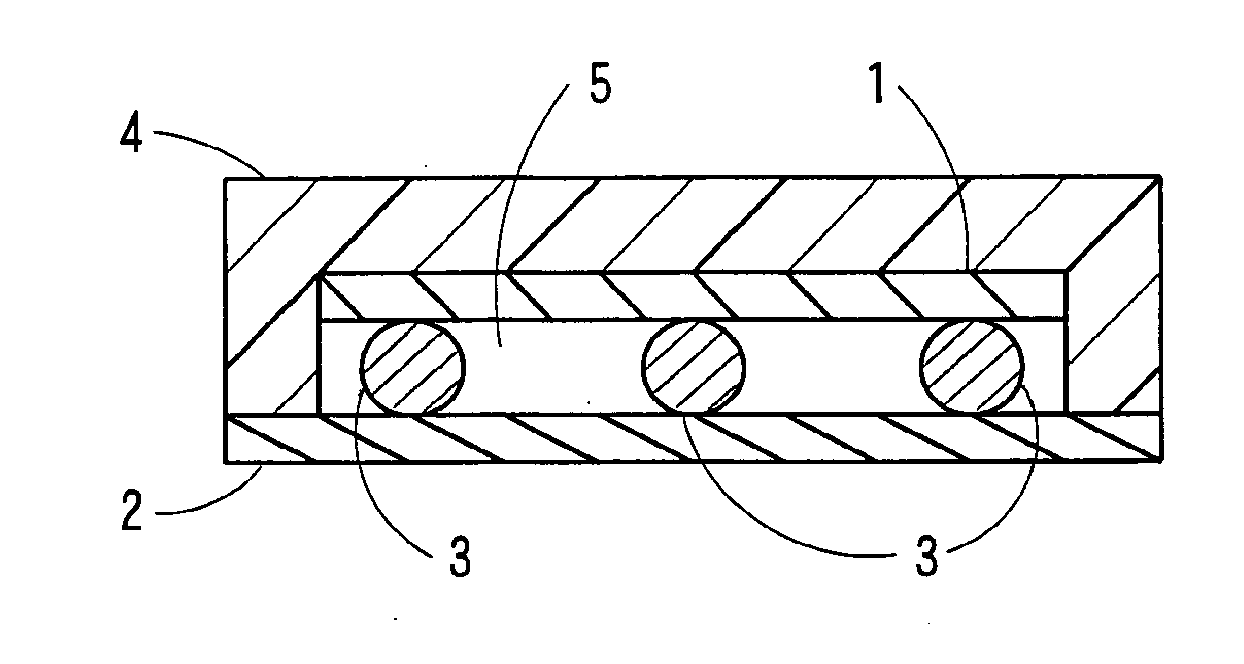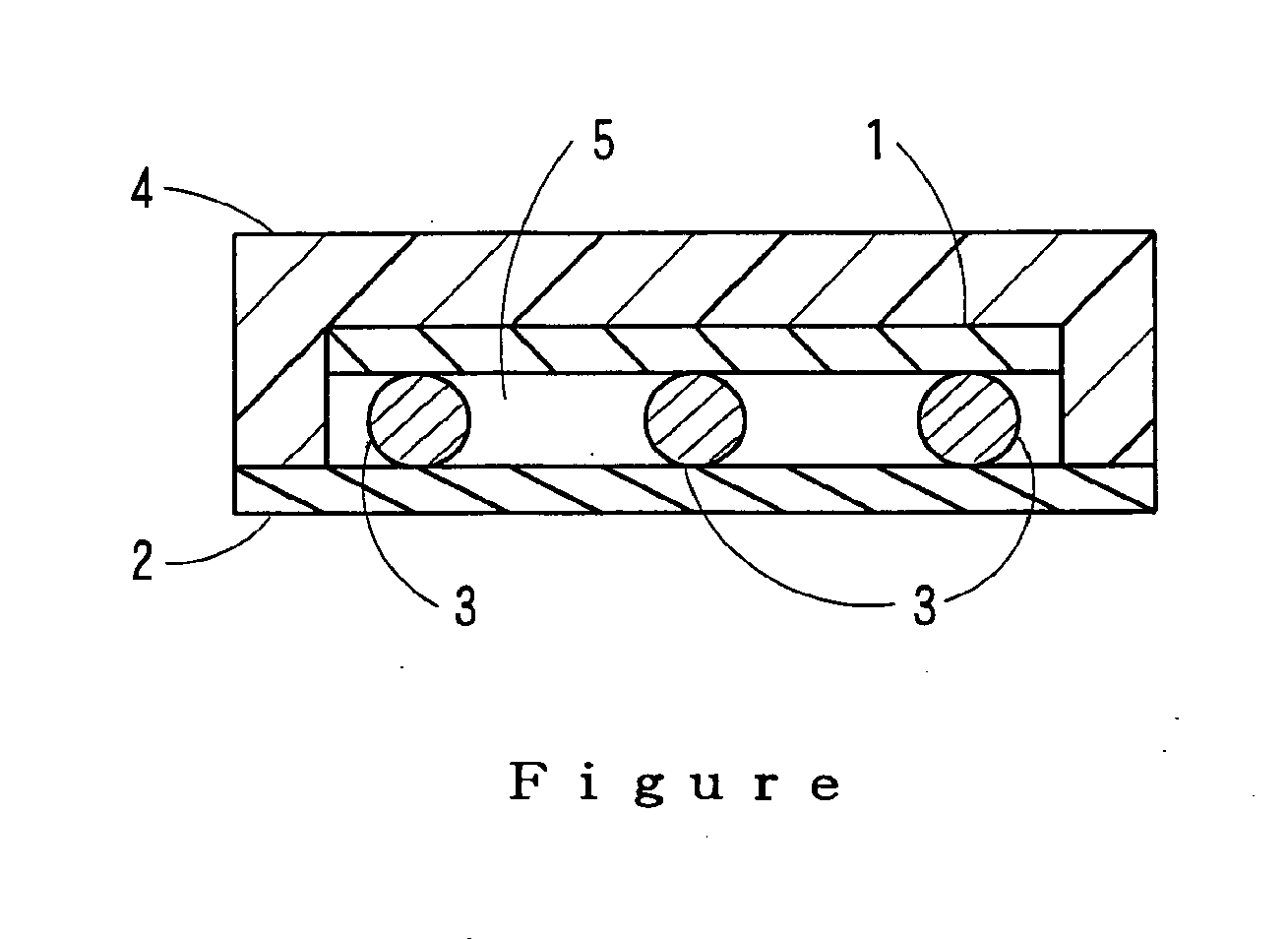Thermosetting encapsulation adhesive sheet
a technology of encapsulation resin and adhesive sheet, which is applied in the direction of film/foil adhesives, non-macromolecular adhesive additives, transportation and packaging, etc., can solve the problems of high molding machine cost, less expensive and convenient encapsulation method, and encapsulation resin adhesion to unwanted parts of the device. , to achieve the effect of excellent storage stability
- Summary
- Abstract
- Description
- Claims
- Application Information
AI Technical Summary
Benefits of technology
Problems solved by technology
Method used
Image
Examples
examples
[0040]Inventive examples will hereinafter be described in conjunction with comparative examples. However, it should be understood that the present invention be not limited to these inventive examples.
[0041]First, the following ingredients were prepared.[0042]Epoxy resin-a: A naphthalenediol epoxy resin (ESN-355 available from Tohto Kasei Co., Ltd.)[0043]Epoxy resin-b: A bisphenol-A epoxy resin (EPICOAT 828 available from Japan Epoxy Resin Co., Ltd.)[0044]Epoxy resin-c: A trishydroxyphenylmethane epoxy resin (EPPN-501HY available from Nippon Kayaku Co., Ltd.)[0045]Phenol resin-a: A novolak phenol resin (H-4 available from Meiwa Plastic Industries, Ltd.)[0046]Phenol resin-b: A novolak phenol resin (DL-65 available from Meiwa Plastic Industries, Ltd.)[0047]Acryl resin-a: An acryl copolymer (TEISAN RESIN SG-70L available from Nagase ChemteX Corporation)[0048]Acryl resin-b: An acryl copolymer (TEISAN RESIN SG-P3 available from Nagase ChemteX Corporation)[0049]Curing accelerating agent-a:...
PUM
| Property | Measurement | Unit |
|---|---|---|
| temperature | aaaaa | aaaaa |
| viscosity | aaaaa | aaaaa |
| softening point | aaaaa | aaaaa |
Abstract
Description
Claims
Application Information
 Login to View More
Login to View More - R&D
- Intellectual Property
- Life Sciences
- Materials
- Tech Scout
- Unparalleled Data Quality
- Higher Quality Content
- 60% Fewer Hallucinations
Browse by: Latest US Patents, China's latest patents, Technical Efficacy Thesaurus, Application Domain, Technology Topic, Popular Technical Reports.
© 2025 PatSnap. All rights reserved.Legal|Privacy policy|Modern Slavery Act Transparency Statement|Sitemap|About US| Contact US: help@patsnap.com


